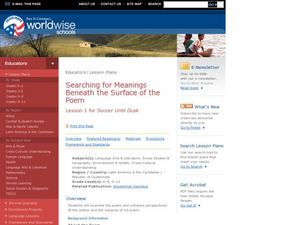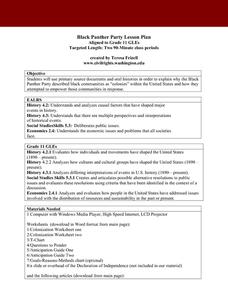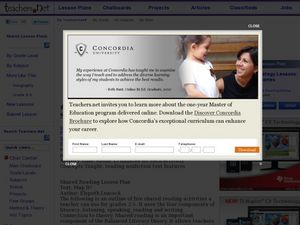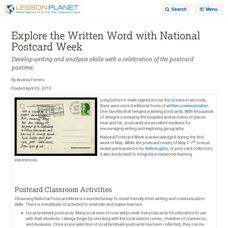The New York Times
Decision Point: Understanding the U.S.’s Dilemma Over North Korea
Simulate the Situation Room and analyze the US's relationship with North Korea. The plan starts off with a quick review and an examination of a online timeline that updates as the situation continues. Next, the class reads an article and...
Youth Leadership Initiative
Selecting a President: Primaries and Caucuses
What is a party caucus anyway? And what part do caucuses play in the primaries? Everything future voters need to know about the four stages in the presidential selection process is provided by this resource. The 2012 US Presidential...
Curated OER
Defined: The Different Types of Government
The world is a big place, so it only stands to reason that different forms of government exist. Democracy, autocracy, oligarch, monarch, and dictatorship are all defined. An extensive explanation of US government system is also included....
Kuta Software
Distance - Rate - Time Word Problems
For this word problem worksheet, algebra learners solve 10 distance problems. Problems include motion in different directions, the same direction, and round trips.
Curated OER
With Malice toward None: Lincoln's Assassination
Students analyze primary documents regarding Lincoln's assassination. In this instructional activity on Lincoln's assassination, students analyze three primary sources of information regarding President Lincoln's assassination.
Curated OER
Cartoons for the Classroom: Multinational Corporations
The octopus is a commonly used symbol in political cartoons. Help your scholars examine why it has been used in this way throughout history. Three cartoons depict different uses of the octopus. Background information helps gives context...
Curated OER
Jazzing Up the Classroom
Tune-up mundane subjects with some lively jazz for a cross-currricular kick!
K5 Learning
The Fox and the Little Red Hen
Read about the fox family that decides to cook a hen for dinner. After reading, individuals answer questions about the elements of plot in the story. They require drawing conclusions, making predictions, and describing specific parts in...
C-SPAN
Presidential Veto and Congressional Override
One of the key powers of the executive branch is the president's ability to pass or veto legislation proposed by Congress. Congress, the legislative branch, on the other hand, can override a president's veto. Five film clips show how the...
Curated OER
"The Missiles of October": The Cuban Missile Crisis, 1962
Young scholars investigate the presence of Soviet missiles in Cuba in 1962 and how that presence triggered an international crisis. The options available to the president as well as the advantages and disadvantages of each are...
Curated OER
Searching for Meanings Beneath the Surface of the Poem
Students examine poems from Latin America and the Caribbean. They compare different perspectives and subjects in the poems. They research Peace Corps volunteers as well.
National Endowment for the Humanities
The New Order for "Greater East Asia"
Sometimes the New Order becomes synonymous with its implications for European countries, but what about its consequences for East Asia? The final instructional activity in a four-part series teaches scholars about World War II. High...
Curated OER
Black Panther Party Lesson Plan
Why did the Black Panther Party feel colonized, and what methods did they employ to achieve empowerment? Your class members will engage in an online PowerPoint presentation, analysis of several documents, and discussion in order to...
Curated OER
Using Social Studies in Five Shared Reading Lessons: Geography
After several short 15-minute mini-lessons, your learners will gain an understanding of the characteristics of a non-fiction text. Using the book Map It by Elspeth Leacock, your class will become acquainted with non-fiction terms such as...
Curated OER
Learning About America
Each slide has a grid to be filled in by a student or team. In order to have that spot active, the student must answer a question about the general history of America and national holidays correctly. There are 10 pages, and each has...
Curated OER
Gilded Age Politics
Whisk your students through the politics of the Gilded Age with this presentation, which features the contexts and characteristics of the 1880-1888 Presidential Elections. Clever political cartoons and clear, concise bullet points about...
Curated OER
Four Famous Faces
Each one of our quarters is embellished with a famous face or image representing the state it came from. This lesson plan uses South Dakota's state quarter to get kids thinking about monetary value, what the president of the United...
Curated OER
Cartoons for The Classroom: Lame Duck Congress
Clear up "lame duck" congressional confusion with this political cartoon analysis worksheet. Background information on the concept's history and current use is provided, and 2 cartoons give a past and present context. Three talking...
Curated OER
Cartoons for the Classroom: Campaign Echoes
Get on those thinking caps, because your class is going to analyze a political cartoon related to the 2008 presidential elections. Included is a large image of the cartoon, background information, and three guiding questions which can be...
Curated OER
Cartoons for the Classroom: The Bush and Clinton Years
Examine how the Bush and Clinton years are an example of political dynasties. This cartoon provides a way to explore the concept and activate critical thinking skills in order to better grasp U.S. Politics. A fun and educational way to...
Curated OER
Explore the Written Word with National Postcard Week
Develop writing and analysis skills with a celebration of the postcard pastime.
Curated OER
Fill-In - October Event in History
A lot has happened in the month of October in the past 100 years or so. Kids fill in the blank for 31 events, each of which occurred on a day in October. Each event can be found in a New York Times article from the past 100+ years....
Curated OER
The State of "No Child Left Behind"
Your class can read about the changes Obama considered making to Bush's No Child Left Behind Act. After reading the article, pupils answer 13 questions that ask, who, what, when, where, and why.
Curated OER
Easy Access: Creating Annotated Versions of News Articles
How can news coverage be made more accessible for teens? Model for your class how to use technology to annotate news stories containing unfamiliar references that hinder their interest in and understanding of a news story. Use the...

























